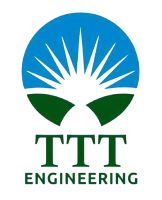- Home
- Welder Training & Certification
Welder Training & Certification
Welder Training & Certification
Welder Training and Certification are essential for ensuring that welders have the skills and knowledge to perform welding tasks safely and effectively while meeting industry standards. Here’s an overview:
Welder Training
Welder training is a structured program designed to teach individuals the skills, techniques, and safety practices required for professional welding.
Key Components of Training:
Introduction to Welding:
- Basics of welding processes (MIG, TIG, Stick, Flux-Cored Arc Welding).
- Overview of materials (steel, aluminum, stainless steel) and their properties.
Welding Techniques:
- Hands-on practice for various joint types (butt, lap, corner, T-joints).
- Learning welding positions (flat, horizontal, vertical, overhead)
Equipment and Tools:
- Understanding welding machines and power sources.
- Usage of electrodes, filler materials, and shielding gases.
Blueprint Reading:
- Interpreting welding symbols and technical drawings.
- Understanding tolerances and specifications.
Safety Training:
- Use of personal protective equipment (PPE), such as helmets, gloves, and aprons.
- Safe handling of equipment and materials.
- Awareness of hazards (electric shock, burns, fumes) and preventive measures.
Practical Applications:
- Welding practice on real-world projects.
- Techniques for achieving strong, high-quality welds.
Training Providers:
- Technical Schools and Community Colleges: Offer comprehensive welding programs.
- Apprenticeships: Combine on-the-job training with classroom instruction.
- Private Welding Schools: Focused programs tailored to industry needs.
Welder Certification
Certification validates a welder’s ability to perform specific types of welding under defined conditions. It ensures compliance with industry standards and is often required by employers.
Key Certification Bodies
American Welding Society (AWS):
- Certifications: AWS Certified Welder (CW), Certified Welding Inspector (CWI).
- Standards: AWS D1.1 (Structural Welding), D15.1 (Railroad Welding), etc.
American Society of Mechanical Engineers (ASME):
- Certifications: ASME Section IX (Welding and Brazing Qualifications).
- Focus on piping, pressure vessels, and industrial welding.
International Certifications:
- European Welding Federation (EWF).
- International Institute of Welding (IIW).
Certification Process:
Application:
- Apply to the relevant certification body and select the desired test.
Testing:
- Perform welding tasks under supervision, typically at an accredited test facility.
- Test variables: material type, welding process, position, joint type.
Evaluation:
- Visual inspection of weld quality.
- Non-destructive testing (NDT), such as radiographic or ultrasonic testing.
Certification Issuance:
- Certification is granted if the test is passed.
- Validity may vary; periodic renewal or retesting is often required.
Benefits of Certification
- Enhanced job opportunities and higher earning potential.
- Recognition of expertise and credibility in the industry.
- Compliance with safety and quality standards.
Advanced Certifications
For experienced welders, advanced certifications include:
- Certified Welding Inspector (CWI).
- Certified Robotic Arc Welding (CRAW) Technician.
- Specialized certifications for underwater or aerospace welding.
Would you like information on a specific certification process or training program near your location?

